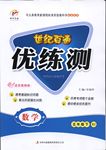题目内容
Every culture has a recognized point when a child becomes an adult, when rules must be followed and tests passed.
In China, although teenagers can get their ID cards at 16, many only see themselves as an adult when they are 18. In the US, where everyone drives, the main step to the freedom of adult life is learning to drive. At 16, American teens take their driving test. When they have their license, they drive into the grown-up world.
“Nobody wants to ride the cheese bus to school,” said Eleanor Fulham, 17. She brought the pressure back to memory, especially from kids from wealthier families. “It’s like you’re not cool if you don’t have a car,” she said.
According to recent research, 41% of 16 to 19-year-olds in the US own cars, up from 23% in 1985. Although, most of these cars are bought by parents, some teens get part-time jobs to help pay.
Not all families can afford cars for their children. In cities with subways and limited parking, some teenagers don’t want them. But in rich suburban areas without subways, and where bicycles are more for fun than transportation, it is strange for a teenager not to have a car.
But police say 16-year-olds have almost three times more accidents than 18 and 19-year-olds. This has made many parents pause before letting their kids drive.
Julie Sussman, of Virginia, decided that her son Chad, 15, will wait until he is 17 to apply for his learner’s permit.
Chad said he has accepted his parents’ decision, although it has caused some teasing from his friends. “They say that I am unlucky,” he said, “But I’d rather be alive than driving, and I don’t really trust my friends on the road, either.”
In China, as more families get cars, more 18-year-olds learn to drive. Will this become a big step to becoming an adult?
- 1.
Which may serve as the BEST title of the article?
- A.Cars Helping You to Grow-Up
- B.Driving into the Grown-Up World
- C.Teenagers’ Driving in America
- D.Recognized Point of Becoming an Adult
- A.
- 2.
16-year-old drivers have more accidents possibly because
- A.they want to show themselves off
- B.they are never experienced drivers
- C.older people always drive better
- D.they never drive carefully on the road
- A.
- 3.
Which may NOT be taken into consideration when deciding whether to buy a car?
- A.How well off the family is
- B.Whether the kid is old enough
- C.What traffic condition there is around
- D.Whether it’s practically needed
- A.
- 4.
When Chad said “I don’t really trust my friends ...”, he meant that .
- A.he might run into his friends if he drove
- B.he didn’t agree with his friends
- C.he might not be safe if his friends drove
- D.he was afraid that his friends might well lie to him
- A.
- 5.
The passage mainly gives information about
- A.an American culture
- B.a cultural difference between America and China
- C.a change in the Chinese culture
- D.the relationship between driving and a person’s development
- A.
BBCCA
试题分析:本文主要讲述的是美国的年轻人在进入成人社会以后,学会了开车。以及人们对于学习驾驶的年龄以及年轻人驾驶安全的一些不同看法。
1.B 主旨大意题。本文主要讲述的是美国的年轻人在进入成人社会以后,学会了开车。以及人们对于学习驾驶的年龄的不同看法,故B正确。
2.B 推理题。根据文章第五段第一句But police say 16-year-olds have almost three times more accidents than 18 and 19-year-olds.可知16岁的孩子驾驶事故要比18,19岁的孩子要多,主要是因为他们驾驶经验不够丰富。故B正确。
3.C 细节题。根据文章3,4,5三段可知家庭经济情况,孩子的年龄,以及是否实用三项都是买车要考虑的内容,C项中的交通情况,在文章中没有提及。故C项符合上下文。
4.C 推理题。根据本句“They say that I am unlucky,” he said, “But I’d rather be alive than driving, and I don’t really trust my friends on the road, either.”可知他认为他的朋友的驾驶技巧不合格,他很担心自己的安全。故C正确。
5.A 推理题。本文主要讲述的美国社会中的年轻人学习驾驶的知识,故属于美国文化的范围。故A正确。
考点:考察文化类短文阅读
点评:本文主要讲述的是美国的年轻人在进入成人社会以后,学会了开车。以及人们对于学习驾驶的年龄以及年轻人驾驶安全的一些不同看法。在解题时要立足已知,推断未知。立足现在,猜测未来。不能主观臆想,凭空想象,随意揣测,更不能以自己的观点代替作者的观点;要把握句、段之间的逻辑关系,了解语篇的结构。要体会文章的基调,揣摸作者的态度,摸准逻辑发展的方向,悟出作者的弦外之音。
试题分析:本文主要讲述的是美国的年轻人在进入成人社会以后,学会了开车。以及人们对于学习驾驶的年龄以及年轻人驾驶安全的一些不同看法。
1.B 主旨大意题。本文主要讲述的是美国的年轻人在进入成人社会以后,学会了开车。以及人们对于学习驾驶的年龄的不同看法,故B正确。
2.B 推理题。根据文章第五段第一句But police say 16-year-olds have almost three times more accidents than 18 and 19-year-olds.可知16岁的孩子驾驶事故要比18,19岁的孩子要多,主要是因为他们驾驶经验不够丰富。故B正确。
3.C 细节题。根据文章3,4,5三段可知家庭经济情况,孩子的年龄,以及是否实用三项都是买车要考虑的内容,C项中的交通情况,在文章中没有提及。故C项符合上下文。
4.C 推理题。根据本句“They say that I am unlucky,” he said, “But I’d rather be alive than driving, and I don’t really trust my friends on the road, either.”可知他认为他的朋友的驾驶技巧不合格,他很担心自己的安全。故C正确。
5.A 推理题。本文主要讲述的美国社会中的年轻人学习驾驶的知识,故属于美国文化的范围。故A正确。
考点:考察文化类短文阅读
点评:本文主要讲述的是美国的年轻人在进入成人社会以后,学会了开车。以及人们对于学习驾驶的年龄以及年轻人驾驶安全的一些不同看法。在解题时要立足已知,推断未知。立足现在,猜测未来。不能主观臆想,凭空想象,随意揣测,更不能以自己的观点代替作者的观点;要把握句、段之间的逻辑关系,了解语篇的结构。要体会文章的基调,揣摸作者的态度,摸准逻辑发展的方向,悟出作者的弦外之音。

练习册系列答案
 世纪百通主体课堂小学课时同步达标系列答案
世纪百通主体课堂小学课时同步达标系列答案 世纪百通优练测系列答案
世纪百通优练测系列答案
相关题目